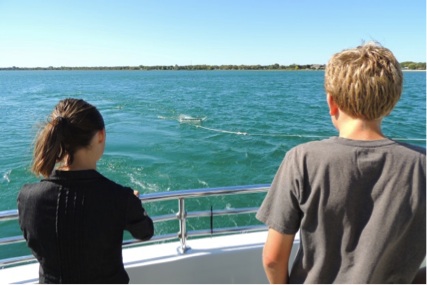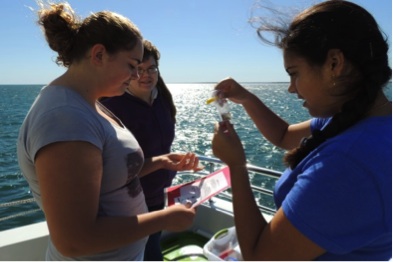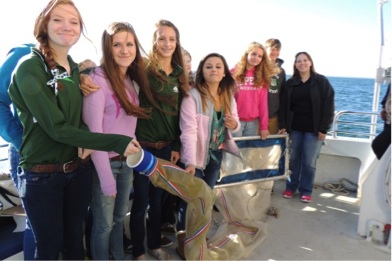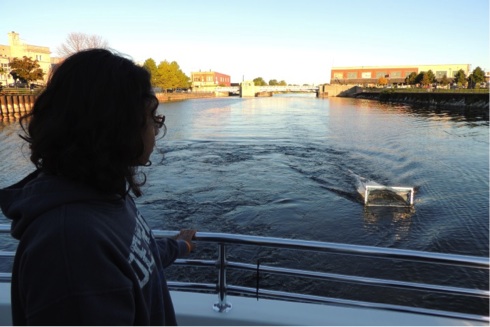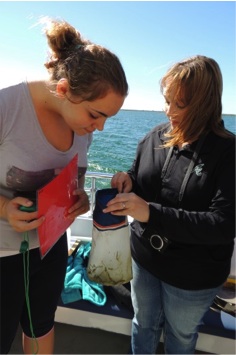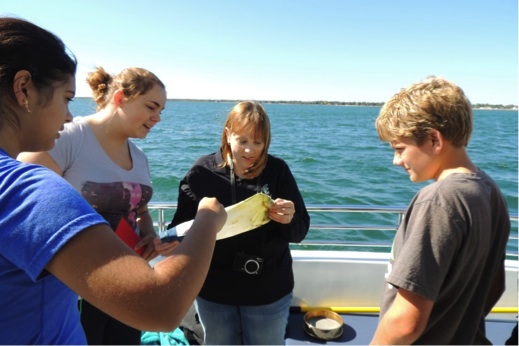Intro to Chemistry students at Alpena High School have a unique assignment. Join with community agencies and partners to get onto Thunder Bay, Lake Huron and collect samples of lake water. Then take it back to the class, analyze the collection and send it off to a university professor who is very interested in Great Lakes marine debris (including microplastics).
During a research cruise onto Lake Huron, students collected water samples aboard the Glass bottom boat Lady Michigan by deploying a surface trawl, a research net designed to sample plastic pollution. Collecting data specific to local Thunder Bay waters, these samples were taken back to the school chemistry lab where they were analyzed for plastics and other chemicals. While on the water, students conducted some field-based water chemistry analysis and learned about biological pollution – aquatic invasive species – also affecting the health of Lake Huron ecosystems.
Prior to these field studies, students researched this issue in class, learning first about marine debris, such as the widely publicized Pacific Ocean garbage patch. The class next localized the issue by exploring current scientific research about plastic pollution in the Great Lakes, including studies about microplastic beads that end up in the environment as a by-product of some personal care products. They studied chemistry of plastics and other polymers, and are currently conducting an in-class scientific investigation where students are discovering that plastic debris does not degrade like other marine debris but rather erodes into small particles. Beyond the beauty of our environment, these plastics also pose potential health concerns in Great Lakes ecosystems.
In the lab, students conducted a preliminary assessment of their own local Lake Huron samples, which will be shared and verified with Dr. Mason’s research team. Students sorted their samples under microscopes discovering relatively low amounts but a variety of plastic pollution. They found blue plastic fibers they believed to be from nylon roping or blue plastic tarps, along with some brightly colored red, green, and blue particles they thought possibly from shopping bags and plastic wrapping. The class even found a few perfectly round green and blue plastic particles thought to be microplastic beads from personal care products.
